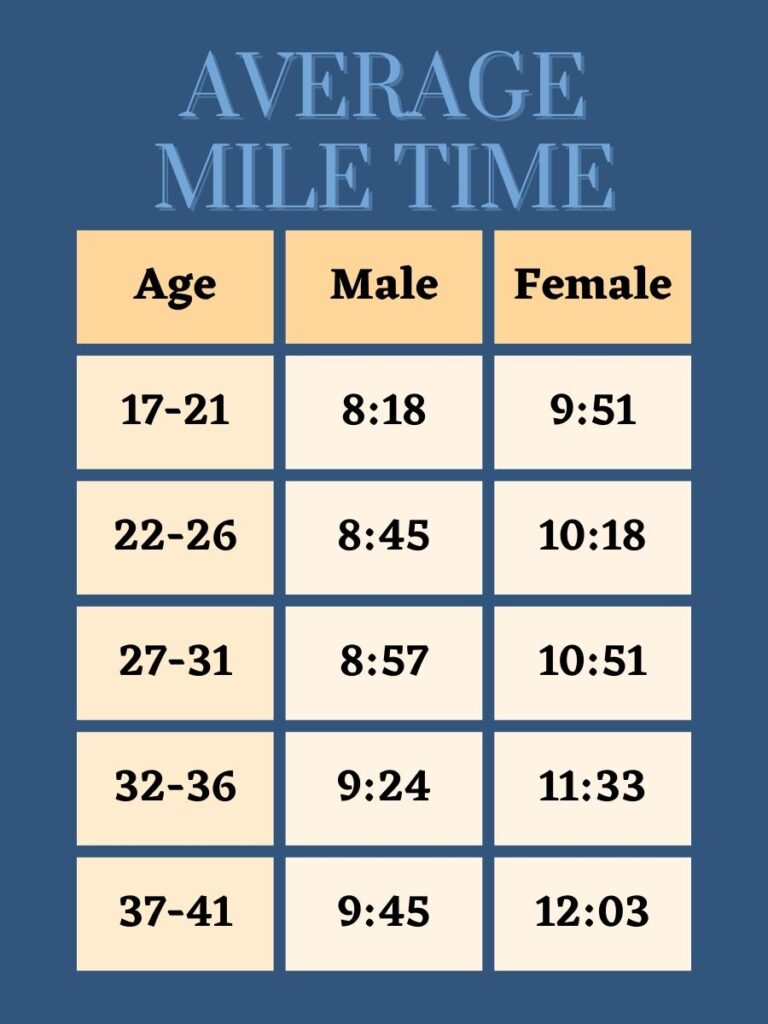Understanding the Factors Influencing a 50-Mile Run Time
When estimating how long it takes to run 50 miles, various factors come into play. Personal fitness levels significantly influence run time, as a higher fitness level enables a runner to maintain a faster pace over longer distances. Proper training is also crucial; a well-structured training plan helps build endurance, strength, and stamina, ultimately reducing run time.
Terrain is another essential factor to consider. Running on trails, for instance, typically takes longer than running on roads due to the uneven surface and the need for greater concentration. Weather conditions, such as heat, cold, or humidity, can also impact run time. Adapting to these conditions is vital to maintaining a consistent pace and minimizing the impact on overall performance.
In summary, understanding the various factors that influence the time it takes to run 50 miles is essential for setting realistic goals and creating a successful training plan. By taking these factors into account, runners can optimize their performance and work towards achieving their desired run time.
How Long Does It Take to Run 50 Miles on Average?
When addressing the question of how long it takes to run 50 miles, it’s essential to consider the wide range of individual results. While the average time for completing a 50-mile run typically falls between 7 to 14 hours, many factors can influence a runner’s personal time. Ultra-runners often participate in races that span distances beyond the traditional marathon (26.2 miles), and the 50-mile distance is a popular choice for those seeking a new challenge.
It’s important to note that individual run times can vary significantly based on factors such as personal fitness levels, training, terrain, and weather conditions. For instance, a seasoned ultra-runner with a solid training base may complete a 50-mile run in under 10 hours, while a novice runner may require more than 14 hours. Acknowledging these differences and setting realistic goals is crucial for a successful and enjoyable 50-mile running experience.
Preparing for a 50-Mile Run: Building a Solid Training Base
A strong training base is vital for improving run time in a 50-mile run. A well-structured training plan should gradually increase weekly mileage, incorporate long runs, and include cross-training activities. This approach helps build endurance, strength, and stamina, allowing runners to maintain a consistent pace throughout the 50-mile distance.
Begin by assessing your current running fitness level and setting realistic goals for your 50-mile run. Gradually increase your weekly mileage by no more than 10% to avoid injury and allow your body to adapt to the increased workload. Incorporate one long run per week, starting at 10 miles and gradually building up to 20-30 miles as your training progresses. Cross-training activities, such as swimming, cycling, or strength training, can further enhance your overall fitness and reduce the risk of injury.
Consistency is crucial when building a solid training base. Aim to maintain a regular running schedule, allowing your body to adapt to the increased mileage and intensity. Be prepared to adjust your training plan as needed based on personal circumstances, such as work, family, or other commitments. Flexibility in your training plan can help ensure long-term adherence and success in completing a 50-mile run.
Strategies for Improving 50-Mile Run Time
Reducing run time in a 50-mile run requires a strategic approach that includes interval training, hill repeats, strength training, and optimal nutrition, hydration, and recovery. Implementing these techniques can significantly enhance performance and help achieve personal bests.
Interval training involves alternating between high-intensity and low-intensity running intervals. This approach helps improve cardiovascular fitness, speed, and endurance. For example, try incorporating 400-meter intervals at a faster-than-race pace, followed by a 400-meter recovery jog. Repeat this pattern for several sets, allowing adequate recovery between intervals.
Hill repeats are another effective strategy for improving run time. Running uphill at a challenging pace develops leg strength and power, while the subsequent downhill running targets eccentric muscle control and endurance. Incorporate hill repeats into your training once or twice a week, focusing on proper running form and controlled breathing.
Strength training plays a crucial role in enhancing running performance. Incorporate exercises that target the lower body, core, and upper body to build overall strength and stability. Aim to perform strength training exercises two to three times a week, allowing adequate recovery between sessions.
Proper nutrition, hydration, and recovery are essential for supporting improved performance. Fuel your body with a balanced diet rich in carbohydrates, proteins, and healthy fats. Stay hydrated throughout your training and the race itself, and allow adequate time for recovery after each training session and the 50-mile run. Implementing active recovery techniques, such as light jogging, stretching, or foam rolling, can further support the recovery process.
Navigating Challenging Terrain and Conditions: How They Affect Run Time
Different terrains and weather conditions can significantly impact run time during a 50-mile run. Adapting to these variables is crucial for maintaining a consistent pace and achieving your target time. Here, we discuss how to navigate various terrains and weather conditions effectively.
Terrain
Trails often present more challenging terrain than roads, with uneven surfaces, inclines, declines, and obstacles. Running on trails requires more focus and energy, increasing run time compared to running on roads. To adapt, practice trail running regularly and invest in appropriate footwear for added traction and stability. In contrast, running on roads typically allows for a more consistent pace and a potentially faster run time.
Weather Conditions
Weather conditions, such as heat, cold, or humidity, can also affect run time. In hot weather, your body must work harder to regulate its temperature, increasing energy expenditure and run time. To combat this, wear light, breathable clothing, and stay hydrated. In cold weather, dress in layers to maintain body heat and prevent hypothermia. Humidity can make running feel more challenging, as your body struggles to cool itself through sweat evaporation. Slow down your pace and focus on maintaining proper hydration and electrolyte balance.
By understanding how terrain and weather conditions impact run time, you can better prepare for a 50-mile run and adjust your strategy accordingly. This knowledge will help you maintain a consistent pace, overcome obstacles, and ultimately achieve your target time.
Mental Strategies for Tackling a 50-Mile Run
Mental strength is a crucial factor in completing a 50-mile run and significantly impacts run time. Developing mental resilience and implementing effective techniques can help maintain focus, stay motivated, and overcome setbacks during the run. Here, we discuss various mental strategies to enhance your performance in a 50-mile run.
Set Clear Goals
Establishing clear, realistic goals can provide direction and motivation throughout your training and the run itself. Break down the 50-mile distance into smaller, manageable goals, such as completing each 10-mile segment within a specific timeframe. Achieving these milestones will boost confidence and maintain momentum towards finishing the entire distance.
Practice Visualization
Visualization is a powerful tool for enhancing mental strength. Regularly imagine yourself successfully completing the 50-mile run, overcoming obstacles, and maintaining a consistent pace. This mental rehearsal can help build confidence, reduce anxiety, and better prepare you for the physical and mental challenges of the run.
Develop Mental Toughness
Cultivating mental toughness involves embracing discomfort and pushing through adversity during training and the run. Regularly challenge yourself with difficult workouts, long runs, and adverse weather conditions to build mental resilience. Overcoming these challenges will help you develop the mental fortitude necessary to complete a 50-mile run.
Stay Positive and Present
Maintaining a positive attitude and focusing on the present moment can help overcome setbacks and maintain motivation during the run. When facing difficulties, acknowledge negative thoughts and emotions, then redirect your focus to the task at hand. Break the run into smaller segments and concentrate on completing each segment successfully.
By incorporating these mental strategies, you can develop the mental strength required to excel in a 50-mile run. A strong mental approach will not only help reduce run time but also contribute to a more enjoyable and rewarding experience.
Recovering After a 50-Mile Run: The Key to Future Improvements
Proper recovery is essential after completing a 50-mile run to support future performance improvements and prevent injuries. Implementing effective recovery techniques is crucial for both short-term and long-term success in ultra-running. Here, we discuss tips for active recovery, nutrition, and rest to help you bounce back stronger and faster.
Active Recovery
Active recovery involves light physical activity in the days following a 50-mile run. Engaging in gentle exercises, such as walking, cycling, or swimming, can help promote blood flow, reduce muscle soreness, and speed up the recovery process. Aim for 20-30 minutes of light activity within the first two to three days after your run.
Nutrition
Proper nutrition plays a vital role in recovery. Consuming a balanced diet rich in carbohydrates, proteins, and healthy fats can help replenish energy stores, repair muscle tissue, and support overall recovery. Focus on consuming nutrient-dense foods, such as whole grains, lean proteins, fruits, vegetables, and healthy fats from sources like avocados, nuts, and seeds. Additionally, consider incorporating anti-inflammatory foods, such as turmeric, ginger, and omega-3 fatty acids, to help reduce inflammation and support recovery.
Hydration and Electrolyte Balance
Staying hydrated and maintaining electrolyte balance is crucial during the recovery process. Adequate hydration helps facilitate the removal of waste products from your body and supports overall recovery. Monitor your urine color, aiming for a pale yellow hue, and consider using electrolyte supplements or sports drinks to help replenish lost electrolytes.
Rest and Sleep
Adequate rest and sleep are vital components of the recovery process. Aim for 7-9 hours of sleep per night to support muscle repair, hormonal balance, and overall recovery. Additionally, listen to your body and take rest days as needed to allow for proper recovery and adaptation.
By incorporating these recovery techniques, you can optimize your post-run recovery and set the stage for future performance improvements. Remember, the recovery process is just as important as the training itself, so invest time and effort into prioritizing recovery after a 50-mile run.
Real-Life Success Stories: Learning from Experienced Ultra-Runners
Gaining insights from experienced ultra-runners who have successfully completed 50-mile runs can provide valuable guidance and inspiration for those looking to improve their performance. By learning from others’ experiences, you can enhance your training, strategies, and overall approach to tackling a 50-mile run.
Case Study 1: The Importance of Gradual Training Progression
Runner A, a former marathoner, decided to transition to ultra-running and aimed to complete a 50-mile race. By gradually increasing weekly mileage, incorporating long runs, and allowing ample recovery time, Runner A built a solid training base. Over several months, Runner A progressed from running 20 miles per week to consistently running 50-60 miles per week. This gradual progression allowed Runner A to complete the 50-mile race successfully, emphasizing the importance of a well-structured training plan.
Case Study 2: Adapting to Challenging Terrain and Conditions
Runner B, an experienced trail runner, focused on improving run time on various terrains and weather conditions. By practicing on hilly trails and in adverse weather, Runner B developed the skills and confidence necessary to adapt to changing conditions during a 50-mile race. Runner B’s ability to maintain a consistent pace in diverse conditions contributed to a strong performance and personal best time.
Case Study 3: Implementing Mental Strategies
Runner C, a seasoned ultra-runner, emphasized mental strength during training and races. By practicing visualization, setting clear goals, and focusing on positive self-talk, Runner C developed a resilient mindset. This mental fortitude helped Runner C overcome setbacks, maintain motivation, and ultimately achieve a personal best time in a 50-mile race.
By learning from these real-life success stories, you can glean valuable insights and apply them to your own training and performance. Remember that each runner’s journey is unique, and incorporating elements from various experiences can help you create a well-rounded, effective approach to tackling a 50-mile run.








